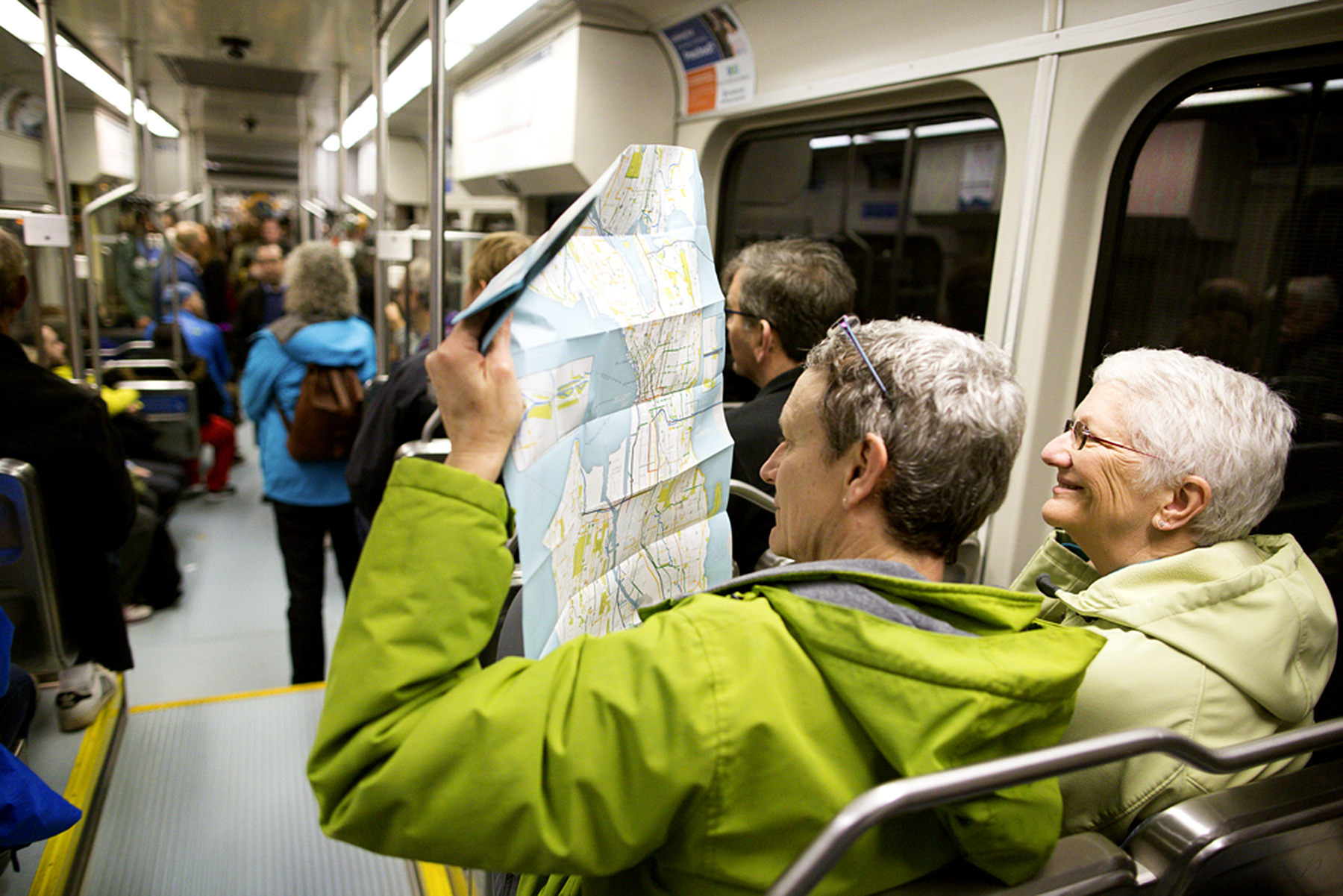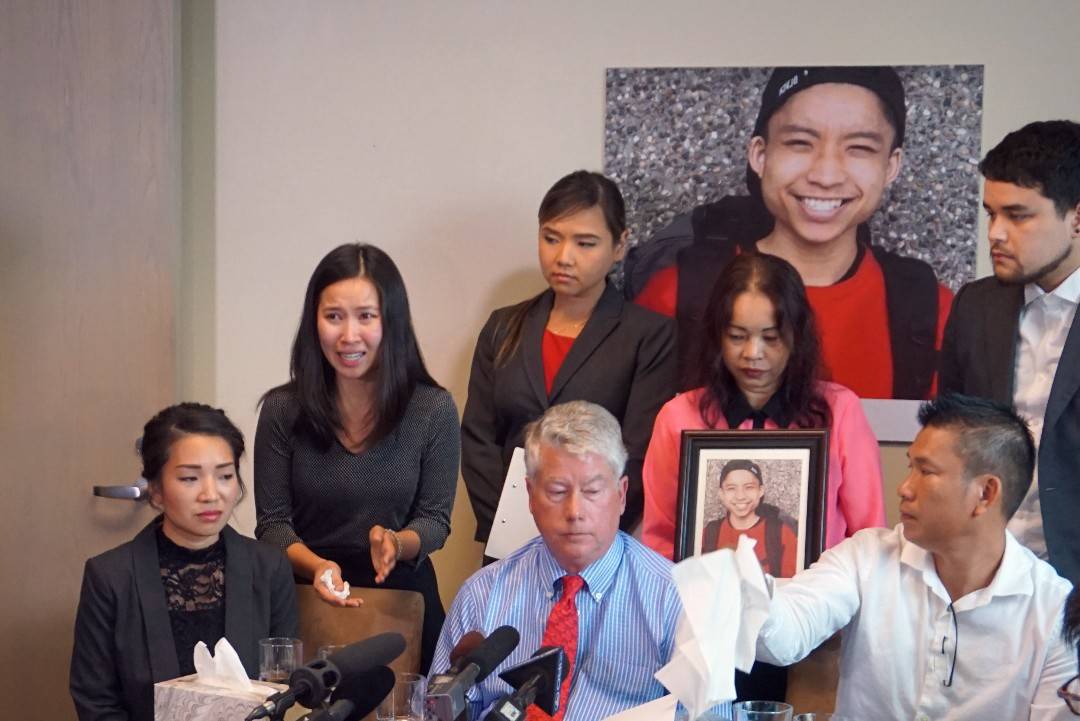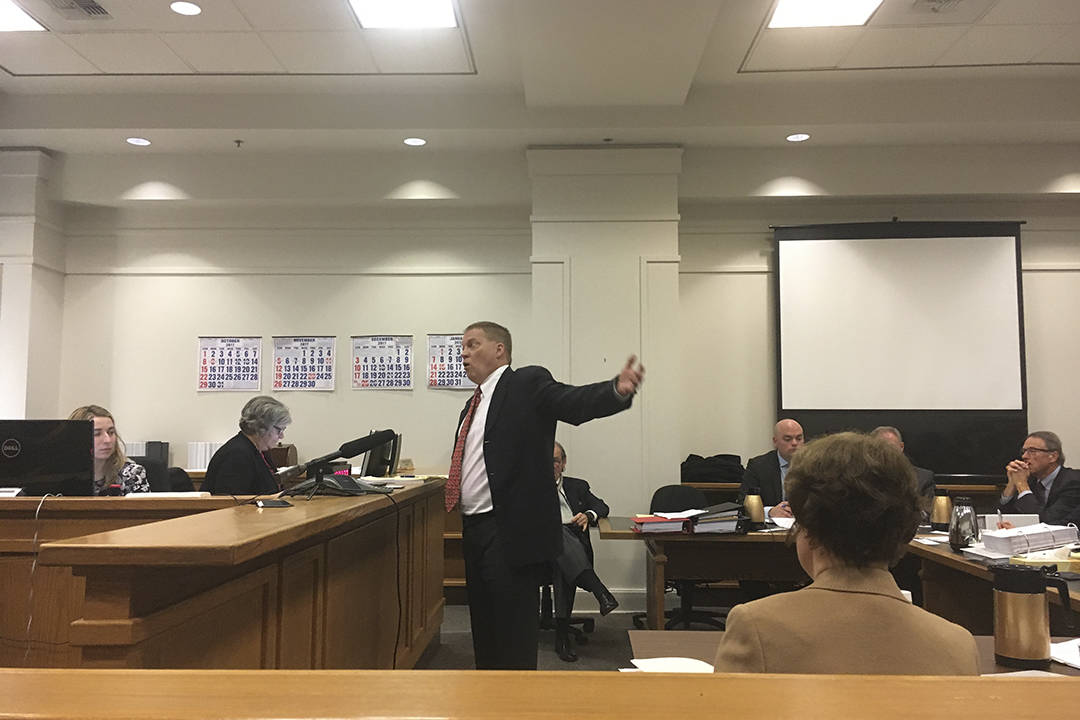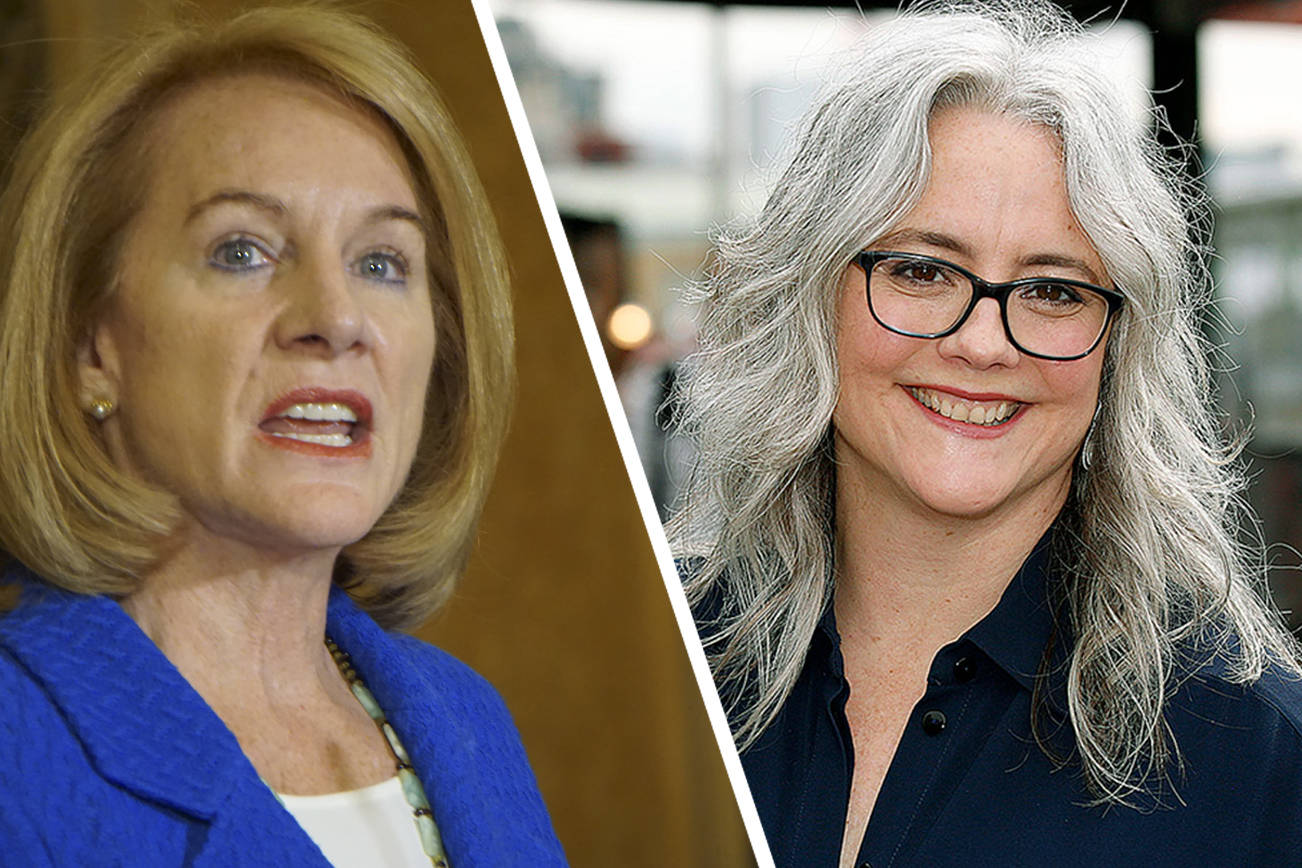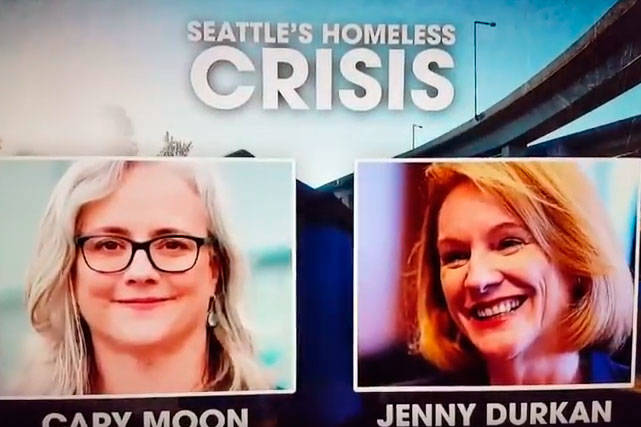In 2008, voters in the 36th legislative district — covering Interbay, Ballard, and Magnolia — approved Sound Transit’s 15-year, $18 billion spending package by a 40-point margin.
A rout by any political standard, the big spread is all the more impressive given that ST2, the 2008 ballot measure from the regional transit agency, really didn’t deliver much to that slice of Seattle. Rather, the bulk of that $18 billion was earmarked for light rail expansion to the Eastside, Lynnwood, and Des Moines.
In the intervening years, Ballard has experienced explosive growth. In the four years from 2010 to 2014, the neighborhood’s population grew by 24 percent, according to census figures. And that could be but a sneak preview of what’s to come. The city of Seattle has plans to rezone Ballard to allow for far denser housing, meaning thousands more people will be moving to the neighborhood. In response, Sound Transit this time around is proposing devoting significant resources toward Ballard in ST3 with plans to build a light-rail line that would connect the former fishing village to the spine of the system, which currently runs from the University District to Angle Lake. One part of what would be, in the end, a 116-mile system, the line is projected to carry as many as 145,000 riders a day by 2045.
Given Seattle residents’ reputation as a people who have never met a tax they wouldn’t approve, it seems almost impossible that voters in the 36th — who would see a total of six light rail stops built in their neighborhoods under the ST3 plan — will reject Proposition 1 this fall. But John Niles argues they should do just that.
Niles is no cranky Eastsider angry at the whole idea of transit. He lives in Interbay, not far from where the Ballard line would stop on its way to South Lake Union and downtown. If he is cranky, he didn’t come off as such over the phone. And he made a living consulting municipalities about transit.
Niles’ argument against ST3 comes down to three central points: The plan is too dependent on rail, even in population-dense Seattle; it takes too long to complete for a city growing as quickly as Seattle is; and voters simply shouldn’t trust Sound Transit to get it right, even under the present extended timeline and eye-opening pricetag ($54 billion over the next 25 years).
Niles’ viewpoint cuts hard against the conventional wisdom in Seattle, which holds that Sound Transit — and the light rail it is building — is already proving to be a transformative force in the city with its 18-mile rail system running between the University of Washington and Angle Lake south of SeaTac. Following the opening of new stations on Capitol Hill and Husky Stadium in March — on a line called the U-Link — ridership has boomed as people avail themselves of the once unfathomable seven-minute trip from Montlake to Downtown.
Sound Transit officials certainly weren’t shy when talking about the significance of the line’s expansion. “Today, we celebrate an historic achievement — delivering new high-capacity light rail that will transform transportation in our region for the next century,” Dow Constantine said in prepared remarks at the opening of U-Link. Writing in Seattle Met, Kathryn Robinson says she started to cry when she first made her commute from North Seattle on rail, going from Husky Stadium to downtown in the time it used to take her bus to go a few stops. Rail cars have been quickly filling to “crush capacity” as riders flock to the line, and Sound Transit officials have expressed surprise at the degree to which ridership spiked following the opening of U-Link.
But Niles argues that this seemingly unanimous celebration should be looked at skeptically. In particular, he says Sound Transit had originally promised far greater ridership for the rail line when first selling it back in 1996, making any argument that the line is exceeding expectations baseless.
“They talk about being surprised by these record-breaking ridership numbers on the Link, but that’s just not true. When people voted for Sound Transit the first time [in 1996], the promise was 105,000 average rides a day on U-Link,” he says. “They rejiggered that number, and now they say they’re beating it.”
Niles also argues that the packed rail cars that riders are experiencing on Link Light Rail (interpreted by many as a vote of confidence in the system) is actually further proof of Sound Transit mismanagement, saying they raise questions of whether the agency will be able to actually deliver a built-out system that doesn’t leave people standing on the platform, unable to get on the train.
“All I’m saying is, I’m not impressed with how it’s all starting off,” he says. “I think there’s uncertainty, more than anything else.”
To which Jonathan Hopkins says hogwash.
Hopkins is part of the transit activist group Seattle Subway, which has spent the better part of the last two years pressing Sound Transit to include as much light rail as possible in its package and is now pushing voters to approve the plan.
Looking at Seattle’s history of supporting transit measures, Hopkins sounds fairly confident that Seattle will get behind this measure as well. A precinct-level analysis of the 2008 transit vote shows a majority of precincts within Seattle city limits voted in favor of ST2 by a margin of 65 percent or more.
But he doesn’t just think Seattle voters will approve ST3. He thinks they should vote for it.
No one can deny that Sound Transit got off to a bad start after voters first approved the original light rail plan from SeaTac to University of Washington in 1996. That plan was supposed to cost $3.9 billion and take 10 years. Instead, Sound Transit just opened the final installment of the line, which ended up costing 80 percent more than projected.
However, Hopkins argues Sound Transit has earned the region’s trust over the past 16 years.
“Sound Transit is one of the best agencies in the country at what they do,” he says. “All 12 of their tunnels have been completed on time, all their light rail projects since 2001 have been on time and on budget, and they have 22 straight clean audits.”
His group also cites studies showing that traffic delays are growing worse by 25 percent a year, a statistic it says proves that roadways — and the buses that use them — will never solve the region’s transportation needs. Instead, he says, Seattle needs light rail.
But voters who concede that point alone won’t automatically love what ST3 offers. Specifically, the timeline of the projects are clearly seen as a political liability to those who want to see them pass. The West Seattle line would not be operational until 2030, Sound Transit projects. The Ballard line won’t be ready until 2035.
Seattle Subway itself was among a group of transit activists arguing that Sound Transit was being too conservative with its timelines and that it could honestly project quicker construction schedules without driving up the cost. The group was partially successful with that argument, and in June the agency bumped up its light rail timelines (before the adjustment, light rail had been scheduled to arrive in Ballard in 2038). Still, if anything leads Seattle to reject a plan that promises salvation from our current traffic nightmares, it will be frustration over how long salvation will take.
Hopkins argues that’s self-defeating logic: Voting against ST3 now will only delay the projects further, he says.
“Voting ‘No’ guarantees just one thing inside Seattle: Slower construction of a smaller system that goes fewer places,” he says.
History would seem to back him up on that. Sound Transit has successfully passed two bonding measures before, in 1996 and 2008. However, both of those victories came after the defeat of more ambitious plans. Hopkins argues that the defeat of ST3 would likely cause Sound Transit to come back to voters with a more modest plan. Furthermore, for political reasons, it may not put that plan in front of voters until 2020, since the previous two ballot victories came on presidential election years when voter turnout is at its highest. In other words, longer wait, less to offer.
Niles doesn’t think waiting is such a bad thing. He notes that Sound Transit still has a long way to go on its ST2 projects, meaning the region will continue to see many miles of light rail built out even if ST3 doesn’t get approved.
“My argument for Seattle voters is, ‘Listen, you are fully funded through Lynnwood [via ST2]. Let’s see how it works,’ ” he says.
Meanwhile, he argues, big improvements could be made to the Metro transit system to make it work better for riders — an immediate and relatively cheap solution compared to light rail.
“A strong focus on Metro, which is a very good agency, could make buses work much better. Give [Metro] some time, and let’s see how this ST2 is working out, to make things better,” he says.
But would someone sitting on the Rapid Ride D line from Ballard — stuck in traffic, say — agree that buses are the way to go?
“Buses inevitably are going to mix with traffic some. They’re not as good as trains for that,” Niles acknowledges. “But it’s a problem you can chip away at and make better all the time.”
A third option has been floated, if only in hypothetical talk in transit circles: Seattle going it alone to build out its own rail system, without the bother of trying to win over Eastside, Snohomish, and Pierce County voters. Hopkins acknowledges that the idea has come up among Seattle Subway members, but he says it’s not a good option. Under this scenario, Seattle would resurrect the taxing authority the state legislature granted the city to build the monorail to Ballard and West Seattle — which of course was never built. Such a scenario would need the help of the legislature, since the monorail authority is currently barred by state law from building light rail. But either way, Hopkins says, that plan’s a stinker.
“Standing up a city entity to do the same work as Sound Transit risks the same challenges faced by the monorail in the 1990s,” he says. “It wouldn’t do anything faster. Just worse.”
Seattle has a long history of tried and failed ambitious rail projects. In 1970, voters rejected a county-wide rail plan that would have been mostly paid for by the federal government. It would have cost local taxpayers $440 million to build 49 miles of rail (the $900 million in federal matching money went to Atlanta instead, which now has an extensive rail system). The Monorail was the next attempt at a rail system. That plan would have spent $11 billion on the 14-mile line from Crown Hill to West Seattle — scheduled to be completed in 2009. As opposed to the 1970 plan, Seattle voters did approve the Monorail plan in 2002, but just barely. With only narrow support from the beginning, the plan crumbled as financing trouble eroded its slim majority of support in the city; facing anger over voters smelling a boondoggle (a scent Monorail backers argued was overblown), City Hall scrapped the plan in 2008.
Whether either of these plans would have proved worth the money is, of course, a matter of speculation. But one thing is for sure: As Seattle has delayed committing to a full-fledged rail system, the desire for such a system has never gone away among a significant portion of voters; what has changed is the time and money it’ll take to get it. Can Seattle afford to put rail off any longer? Voters will decide.
dperson@seattleweekly.com
